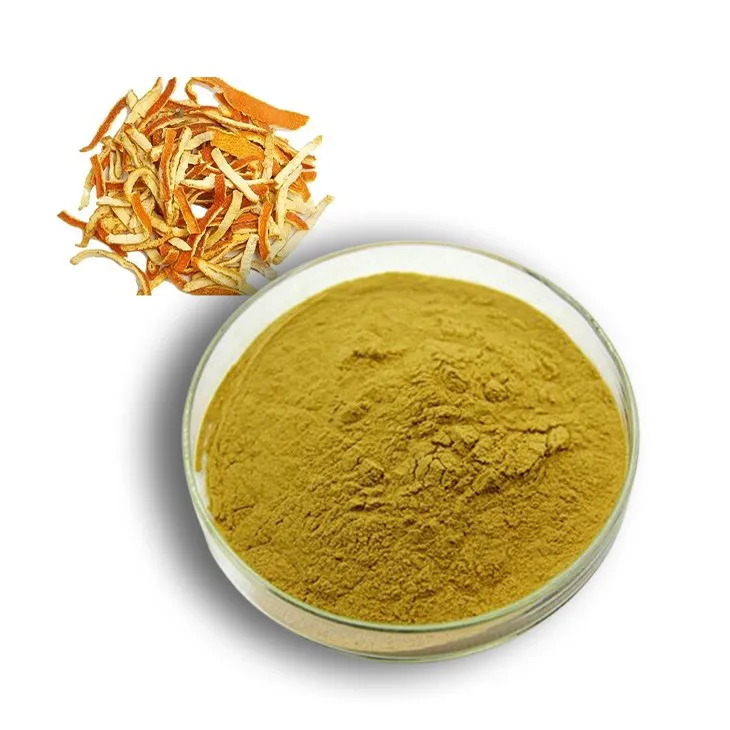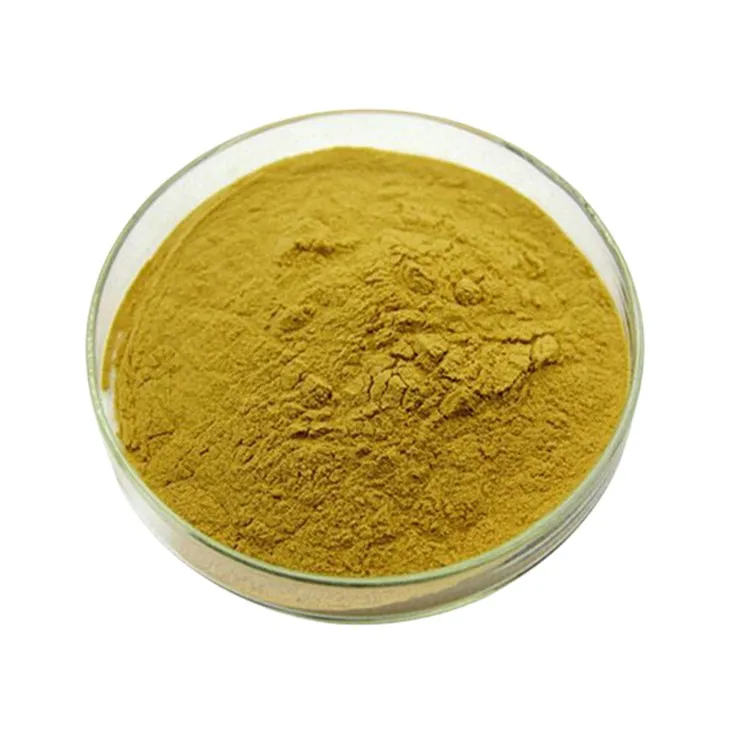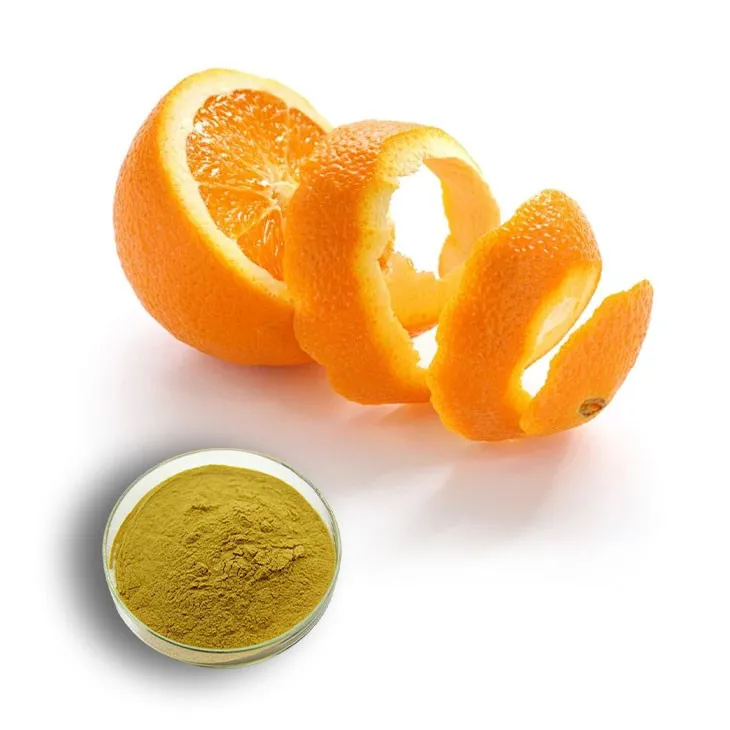- 0086-571-85302990
- sales@greenskybio.com
Hesperidin plants and skin - care products.
2024-11-14

1. Introduction to Hesperidin in Plants
Hesperidin is a remarkable bioactive compound that has its origins in plants. In the plant kingdom, it plays a vital role with multiple functions. Firstly, it acts as a protective agent against pathogens. Plants are constantly exposed to various threats such as bacteria, fungi, and viruses. Hesperidin helps in fortifying the plant's defense mechanisms, reducing the likelihood of infections. For example, in citrus fruits, which are a rich source of hesperidin, it helps to keep the fruit healthy during its growth and development stages, protecting it from potential microbial attacks.
Secondly, hesperidin is involved in regulating growth processes within plants. It can influence factors such as cell division and elongation. This regulation is crucial for the proper development of plant tissues, whether it is the growth of leaves, stems, or fruits. In some plant species, the presence of hesperidin has been associated with enhanced growth rates and overall better plant health.

2. Hesperidin in Skincare: An Overview
In the world of skincare, hesperidin has emerged as a star ingredient. Its potential benefits for the skin are being increasingly explored and recognized. One of the main areas of interest is its role in hyperpigmentation reduction. Hyperpigmentation, which is characterized by the darkening of certain areas of the skin, can be caused by various factors such as sun exposure, hormonal changes, and skin inflammation.
Hesperidin has been studied for its ability to inhibit melanin production to some extent. Melanin is the pigment responsible for skin color, and excessive melanin production can lead to hyperpigmentation problems. By interfering with the melanin - producing cells (melanocytes), hesperidin can help in lightening the skin and reducing the appearance of dark spots. This makes it an attractive ingredient for those looking to address issues related to uneven skin tone.
Another important aspect of hesperidin in skincare is its antibacterial nature. The skin is home to a diverse community of bacteria, some of which can be harmful and lead to skin problems such as acne, infections, and inflammation. The antibacterial properties of hesperidin help in maintaining a clean and healthy skin environment. It can combat the growth of harmful bacteria on the skin surface, reducing the risk of breakouts and other skin infections.

3. The Appeal of Hesperidin - Infused Skincare Products
Skincare products that are infused with hesperidin offer a range of benefits, which not only target specific skin concerns but also appeal to a particular segment of consumers. One of the main appeals is that it caters to consumers who prefer plant - based skincare options. In recent years, there has been a growing trend towards using natural and plant - derived ingredients in skincare. Consumers are becoming more conscious about what they put on their skin and are often looking for products that are free from harsh chemicals and synthetic additives.
Hesperidin, being sourced from plants, fits well into this category. It gives consumers the confidence that they are using a product that is closer to nature. Moreover, plant - based ingredients are often perceived as being more sustainable. This is another factor that attracts consumers. With increasing awareness about environmental issues, many consumers are choosing skincare products that are produced in an environmentally - friendly manner.
Skincare products containing hesperidin also have a competitive edge in the market due to their potential to address multiple skin concerns simultaneously. For instance, a single product with hesperidin can offer both anti - hyperpigmentation and antibacterial benefits. This versatility makes it a valuable addition to skincare formulations.

4. Scientific Studies on Hesperidin in Skincare
4.1 In - vitro Studies
Several in - vitro studies have been conducted to explore the effects of hesperidin on skin cells. In these studies, skin cells such as melanocytes and keratinocytes are cultured in a laboratory setting and exposed to hesperidin. One such study showed that hesperidin was able to significantly reduce the activity of tyrosinase, an enzyme that is crucial for melanin production. This finding supports the hypothesis that hesperidin can play a role in hyperpigmentation reduction at the cellular level.
Another in - vitro study focused on the antibacterial activity of hesperidin. The study found that hesperidin exhibited antibacterial effects against common skin pathogens such as Staphylococcus aureus and Propionibacterium acnes. The mechanism of action involved disrupting the cell membranes of these bacteria, thereby inhibiting their growth and survival.
4.2 In - vivo Studies
In - vivo studies, which are carried out on living organisms (usually animals or humans), have also provided valuable insights into the skincare benefits of hesperidin. In a human clinical trial, a group of participants with mild to moderate hyperpigmentation was given a skincare product containing hesperidin for a period of several weeks. The results showed a visible reduction in the intensity of hyperpigmented areas, with no significant side effects reported.
Similarly, in an animal study, the application of hesperidin - containing formulations on the skin of rodents showed improvements in skin health, including a reduction in bacterial colonization and an improvement in skin barrier function. These in - vivo studies further validate the potential of hesperidin in skincare.

5. Incorporating Hesperidin in Skincare Formulations
When it comes to incorporating hesperidin in skincare formulations, there are several considerations. Firstly, the source of hesperidin needs to be carefully selected. Since it is a plant - derived compound, different plant sources may yield hesperidin with varying levels of purity and potency. For example, citrus fruits are a common source, but other plants may also be explored for a more sustainable or cost - effective supply.
Secondly, the stability of hesperidin in the formulation needs to be ensured. Hesperidin may be sensitive to factors such as light, heat, and pH. Formulators need to develop formulations that can protect hesperidin from degradation during storage and use. This may involve using appropriate packaging materials and adding stabilizers to the formulation.
Finally, the compatibility of hesperidin with other ingredients in the skincare product is crucial. Skincare formulations often contain a complex mixture of ingredients such as emollients, humectants, and preservatives. Hesperidin should be able to interact well with these other ingredients without causing any adverse reactions or reducing the effectiveness of the overall product.
6. Future Perspectives of Hesperidin in Skincare
The future of hesperidin in skincare looks promising. As research continues, more in - depth understanding of its mechanisms of action on the skin is expected. This could lead to the development of more targeted and effective skincare products. For example, scientists may be able to identify specific receptors or pathways in the skin that hesperidin interacts with, allowing for the design of formulations that can optimize its benefits.
There is also potential for the discovery of new applications of hesperidin in skincare. While its role in hyperpigmentation reduction and antibacterial activity is well - studied, there may be other skin conditions or functions that hesperidin can influence. For instance, its antioxidant properties could be further explored for their potential in anti - aging skincare.
Furthermore, with the increasing demand for sustainable and plant - based skincare, hesperidin is likely to gain even more popularity. However, challenges such as ensuring a stable and sustainable supply of hesperidin, as well as meeting regulatory requirements for skincare products, will need to be addressed. Overall, hesperidin has the potential to continue to be an important element in the modern skincare landscape.
FAQ:
What is hesperidin?
Hesperidin is a bioactive compound that is obtained from plants. It has multiple functions within plants such as protecting against pathogens and regulating growth processes. In skincare, it has become a significant ingredient due to various beneficial properties.
How does hesperidin help in hyperpigmentation?
Hesperidin can help in hyperpigmentation reduction as it has the ability to inhibit melanin production to a certain degree. This property makes it valuable for those looking to address issues related to uneven skin tone caused by excessive melanin.
What is the antibacterial role of hesperidin in skincare?
In skincare, the antibacterial nature of hesperidin is important as it helps in maintaining a clean and healthy skin environment. By combating bacteria, it can prevent various skin problems that may be caused by bacterial infections.
Why are skincare products with hesperidin appealing to consumers?
Skincare products containing hesperidin are appealing to consumers because hesperidin is plant - based. Many consumers today prefer sustainable skincare options, and products with hesperidin meet this preference while also providing benefits such as hyperpigmentation reduction and antibacterial action.
Are there any side effects of using hesperidin in skincare products?
As of now, there is no widespread evidence of significant side effects of using hesperidin in skincare products. However, like any ingredient, individual sensitivities may exist. It is always advisable to do a patch test before using a new skincare product containing hesperidin.
Related literature
- The Role of Hesperidin in Skin Health and Cosmetic Applications"
- "Hesperidin - Derived Compounds for Skincare: A Review of Their Efficacy and Safety"
- "Plant - Based Skincare: The Potential of Hesperidin"
- ▶ Hesperidin
- ▶ citrus bioflavonoids
- ▶ plant extract
- ▶ lycopene
- ▶ Diosmin
- ▶ Grape seed extract
- ▶ Sea buckthorn Juice Powder
- ▶ Beetroot powder
- ▶ Hops Extract
- ▶ Artichoke Extract
- ▶ Reishi mushroom extract
- ▶ Astaxanthin
- ▶ Green Tea Extract
- ▶ Curcumin Extract
- ▶ Horse Chestnut Extract
- ▶ Other Problems
- ▶ Boswellia Serrata Extract
- ▶ Resveratrol Extract
- ▶ Marigold Extract
- ▶ Grape Leaf Extract
- ▶ blog3
- ▶ blog4
- ▶ blog5
-
Organic Tongkat Ali extract powder factory.
2024-11-14
-
How to make powder with ashwagandha extract.
2024-11-14
-
Rosehip extract manufacturers from China.
2024-11-14
-
The best cat's claw extract in nature.
2024-11-14
-
Chinese Dandelion Leaf Extract Suppliers.
2024-11-14
-
Peppermint Extract Powder
2024-11-14
-
Kelp Extract Powder
2024-11-14
-
Curcumin
2024-11-14
-
Saw Palmetto Extract
2024-11-14
-
Mulberry Extract
2024-11-14
-
Mulberry leaf Extract
2024-11-14
-
Cactus Extract
2024-11-14
-
Sea buckthorn oil
2024-11-14
-
Yam Extract
2024-11-14
-
Chaste Berry Extract
2024-11-14





















